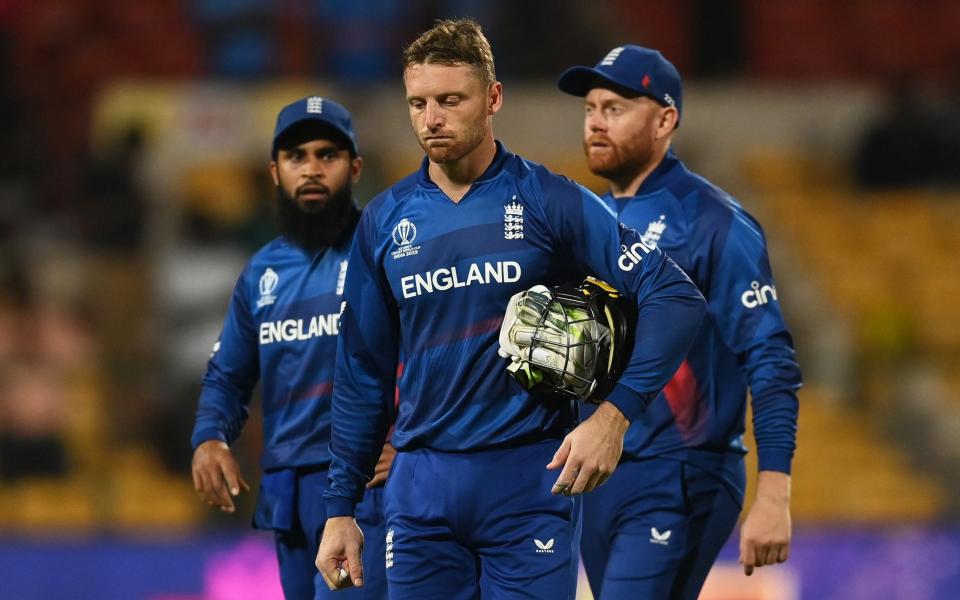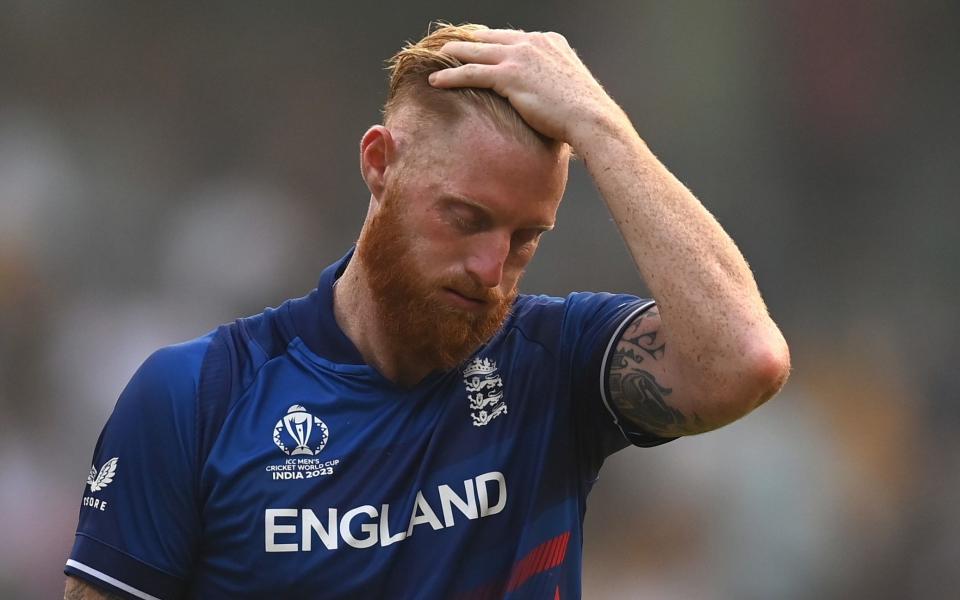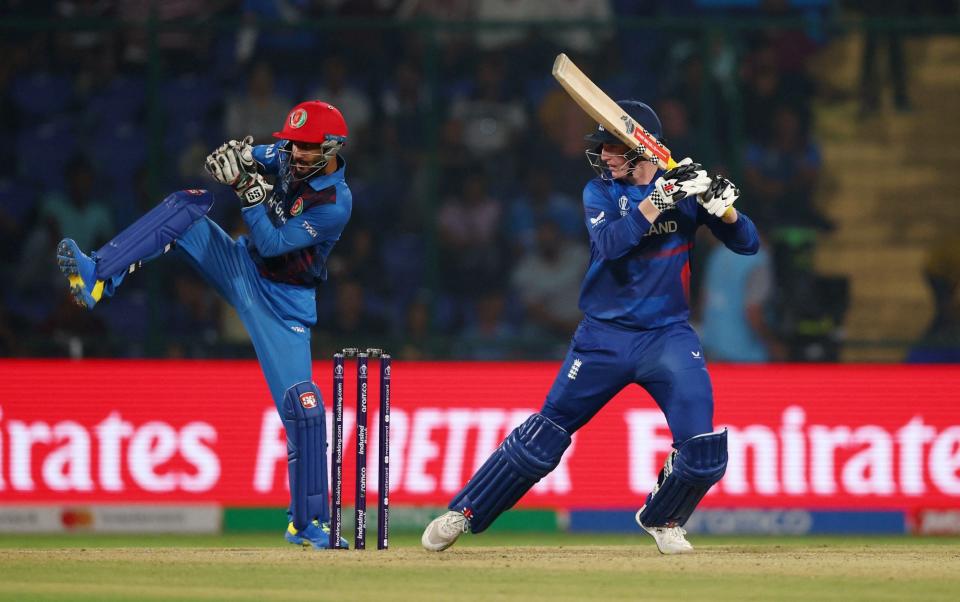England's World Cup chopping and changing returns them to the bad old days of the 1990s

From their first game to the second, England made one change. From the second to the third, three changes. Third to fourth, three more. And fourth to fifth, another three.
It took England just four games to have used all 15 players in their squad. By then, they had dropped the four all-rounders, including the vice-captain, who had lined up from No 6 to 9 in their opening game, opting instead for what they considered their best six batsmen and their best five bowlers.
They lost, so three of those all-rounders were recalled for the fifth match, meaning that, but for a couple of personnel tweaks (Ben Stokes for Harry Brook, and David Willey for Sam Curran), they had gone full circle since in terms of their team structure. It is not as if they have been beset by injuries. Stokes missed the first three games with a hip problem, and Reece Topley was ruled out of the tournament in the fourth.
The root of England’s troubles has been decisions they have made, not decisions forced upon them. By the way, do not be surprised if Topley’s replacement, Brydon Carse, makes it 16 players used when they face the unenviable task of taking on a rampant India on Sunday.
Such erratic selection is reminiscent of English cricket in the 1990s. The bad old days before central contracts, as they are often called, when players did not know from one game to the next whether they would play. The irony of this is that it has come in the month that England announced their most sophisticated and stable set of contracts ever.
Compare and contrast with this team’s crowning achievement, the 2019 World Cup, when two members of the squad, Tom Curran and Liam Dawson, got winners’ medals despite going entirely unused. Through to that tournament, England had backed a group of players and at the big dance it told.
Never underestimate the importance of consistent and clearly communicated selection on a cricket team’s equilibrium. Long tours abroad, especially in Asia where players are more (but not entirely) bound to their hotel, provide ample time for negative thoughts to nibble away.
Since the moment Stokes announced he was coming out of retirement, England’s campaign has been characterised by uncertainty over selection. First, Brook was left out. to the surprise of many. Then he hit form, creating debate around who he would come in for, which the captain Jos Buttler and coach Matthew Mott both stoked in interviews.

Eventually, Brook came in for Jason Roy, a player who, while past his prime, was once such a key member of the side that he was considered a bellwether for its state of mind. It was the right call on a cricketing level, but it contributed to uncertainty. Some players wondered privately if the selectors were influenced as much by the media circus as Brook’s form.
All the while, those contracts were on the table, and took more than a month for some to sign. Stokes and Buttler did not accept the full term of contract offered, while an indignant Willey got no offer at all. Insiders will deny it contributed to the uncertainty, but it will have provided more idle dinner table chat, and cannot have helped.
After five games, the search for that magic formula continues. With Stokes unable to bowl the team looked no closer to being balanced against Sri Lanka than it has all tournament. The latest misstep was to drop Brook, a baffling call. Brook has not torn this tournament up, but his 66 against Afghanistan was remains their most recent half-century, and their most fluent and aggressive innings of the tournament.
Brook, a specialist batsman, was shifted out to make space for the all-rounders, Moeen Ali and Liam Livingstone, who contributed 16 runs from 21 balls, and six wicketless overs for 38 between them. Combined, the pair’s contribution at this World Cup might make a single solid all-rounder, but alas they take up two spots. If they really feared being short on spin on a dry pitch, Joe Root could have chipped in with a few overs. England’s batting order missed the solidity Brook would have provided.

More than that, though, Brook represents the future. England’s XI to face Sri Lanka remarkably, was the first time in their 790 men’s ODIs that the entire team was over 30. Stokes, at 32, was the second-youngest member of the XI. At 29, the team analyst, Freddie Wilde, is younger than the entire team. The four squad members in their 20s – Brook, Carse, Sam Curran and Gus Atkinson – were all warming pine.
That is symbolic of England’s decision to simply back the class of 2019 to go again, rather than allowing some natural generational change. There are various reasons for that, from the pandemic to the schedule, but England’s thinktank must shoulder some of the blame.
“Selection is something you want to be consistent with, build that trust and longevity,” said Buttler. “But selection isn’t our problem at the moment, performance as individuals and a team is. Whoever has taken the field has been short of the standard we set ourselves.”
The second and third sentences may well be true. But the failure to follow through on the aim laid out in the first, through constant flip-flopping, has underpinned the underperformance.

 Yahoo Sport
Yahoo Sport 





































